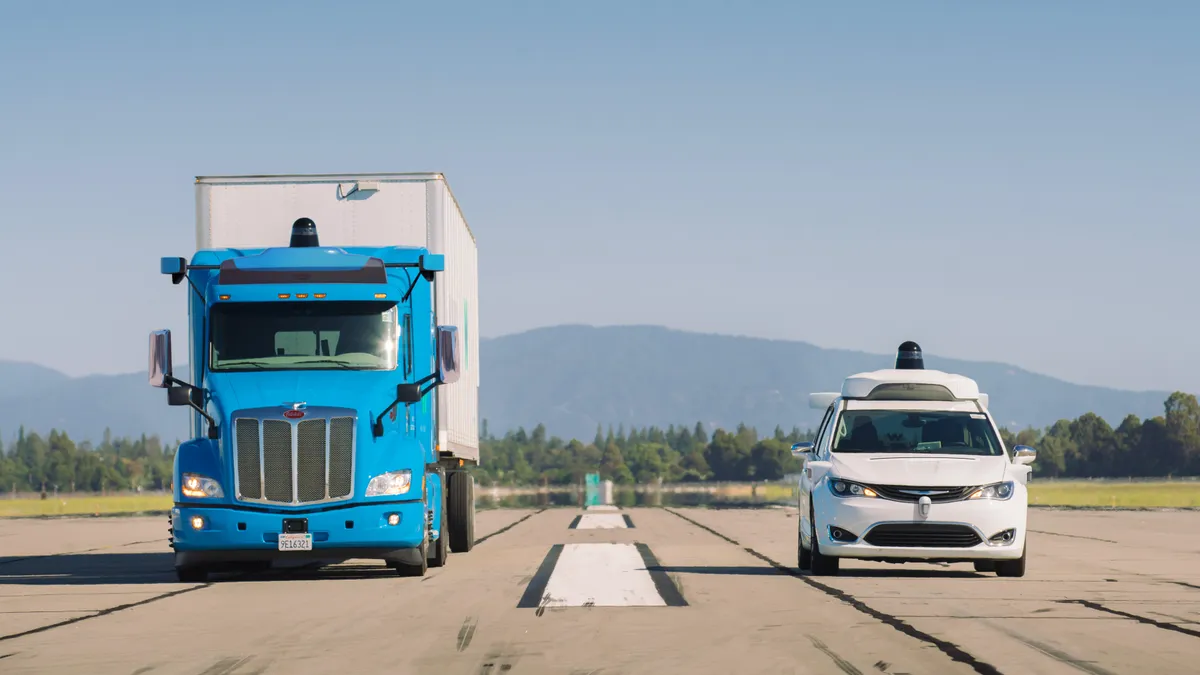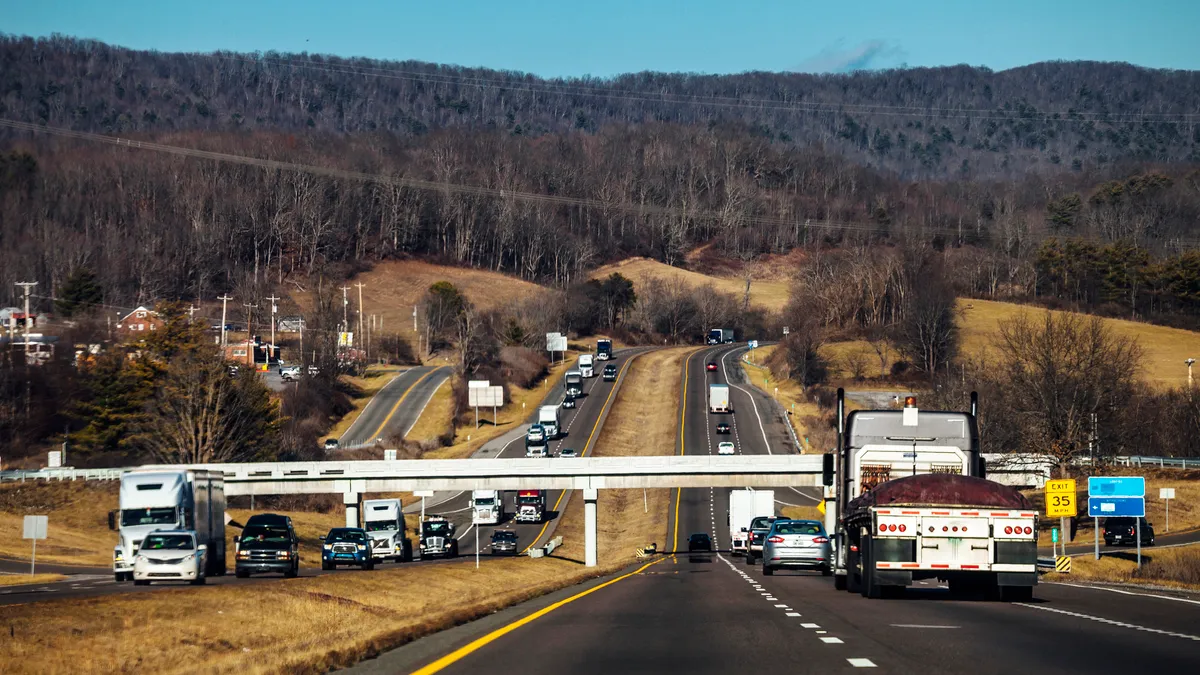Dive Brief:
- The U.S. Department of Transportation's Federal Highway Administration (FHWA) has made a $4.4 million grant to the Ohio Department of Transportation for the I-70 Truck Automation Corridor project, according to a news release. The Indiana-Ohio joint program is one of 10 projects implementing disruptive technology to improve freight and driving efficiencies. With matching funds, about $9 million will be spent to enhance the 175-mile I-70 corridor between the two state capital cities, Indianapolis and Columbus, Ohio.
- Technologies laid along interstate lanes on the I-70 Truck Automation Corridor will enable limited automation, meaning a driver will be present in the cab of the automated truck. The corridor will also be enhanced to allow platooning, when trucks follow closely, cutting down on wind resistance and creating fuel savings. But to ensure trucks brake in sync, the rigs have to use platooning technologies.
- The grant is part of the U.S. FAST Act, which seeks to assist in making "large-scale installation and operation of advanced transportation technologies to improve safety, efficiency, system performance, and infrastructure return on investment."
Dive Insight:
The grant indicates the federal and state governments are looking at testing the technology out on crucial routes. In some limited cases, driverless technology is ready to deploy now.
In December, California-based autonomous trucking company Plus.ai completed its first Level 4 (L4) autonomous coast-to-coast delivery. The vehicle finished the 2,800-mile journey in three days carrying a truckload of Land O' Lakes butter from a distribution hub in Tulare, California, to a hub in Quakertown, Pennsylvania.
L4 autonomous vehicles can make trips without a driver. For Pulse.ai's pilot, a licensed driver and safety engineer were on board at all times to fulfill legal requirements for operating autonomous vehicles on public roads.
But the technology may have a bigger hurdle.
Autonomy will be workable option, Avery Vise, VP of trucking research at FTR, told Transport Dive in March. But Vise has questions about costs and execution. Currently, autonomous technology is expensive, and fleets still plan to have drivers in at least one convoy vehicle, Vise said. That makes saving money harder. Still, Vise said, fleets will figure it out — in time.
Pamela Fisher, director of economic development for the Indiana Department of Transportation (INDOT), said the I-70 corridor links two large international airports in the capital cities of Ohio and Indiana. The Indianapolis airport is the second largest air hub for FedEx, while Columbus has one of the largest intermodal complexes at the airport, she noted during a webinar held on June 16 by Purdue University's Engineering Rising to the Challenge.
Fisher said Indiana is the No. 1 state for "pass-through" roads and interstates, living up to its nickname, the "Crossroads of America." Fisher said the technology will reduce congestion and increase safety, and that INDOT will get behind any technology that does that.












